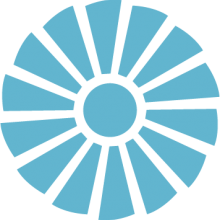Orenda and the Computer - John Duggan, Flight-Lieutenant Ba Peng (ret'd)
John Duggan shares his experiences of working with an electronic calculator, now commonly known as a computer, on the infamous Orenda engine for A.V.Roe Canada Limited, and how the use of this new technology greatly influenced the effectiveness and power of the Canadair Sabres.
"Voices from the Canada Aviation and Space Museum", a new documentary film series produced by the Canada Aviation and Space Museum, in collaboration with Outsiders Films Inc., focuses the spotlight on men who have left their mark on Canada's aviation history.
John Duggan shares his experiences of working with an electronic calculator, now commonly known as a computer, on the infamous Orenda engine for A.V.Roe Canada Limited, and how the use of this new technology greatly influenced the effectiveness and power of the Canadair Sabres.
"Voices from the Canada Aviation and Space Museum", a new documentary film series produced by the Canada Aviation and Space Museum, in collaboration with Outsiders Films Inc., focuses the spotlight on men who have left their mark on Canada's aviation history.
Transcript
Voices from the Canada Aviation and Space Museum
Interview with John Duggan
00:00:00 (ANIMATED LOGO)
OUTSIDERS FILMS
00:00:05 (TITLE) CANADA AVIATION AND SPACE MUSEUM
00:00:13 (TITLE) Orenda and the Computer
00:00:19 (TITLE) JOHN DUGGAN
Flight-Lieutenant BaPH (ret’d)
00:00:22 Actually I, uh, was hired by the engines division of A.V. Roe Canada Ltd., which became Orenda sometime later, uh, to prepare for the arrival of a thing called an electronic calculator; nowadays, we call them computers. But in those days, the word “computer” brought something else to mind. The computers were typically uh, girls who operated desk calculators. So sometimes, when one speaks of computers, you don’t all think of the same thing as I do.
00:00:59 (VISUALS)
00:01:05 The Orenda engine was in production before I joined the company. I didn’t change any, any of the aerodynamics at all; I didn’t change any of the theory at all. I just used a computer to do what the engineers were doing with slide rule and paper and pencil and desk calculator, only faster. So we then did a redesign of the Orenda compressor and the same thing of the turbine. That’s all.
00:01:37 And we raised the thrust of that, the result of that was that it raised the thrust of the Orenda engine from five thousand pounds to, of the order of, seven thousand pounds. In other words, we got a sixty percent increase in performance just by using a computer to calculate more accurately uh, the compressor and turbine. You see, the thing is, that when you’re designing a stage of a compressor, each stage has to be designed – stages of a compressor, one set of fans after the other, each feeding into the next.
00:02:23 So you have to calculate the output of the number one stage and that’s the input to the number two stage. So it’s analogous to the old problem of, you can’t just put more, more people on it. It’s again, analogous to the problem of: consider you’ve got a, uh, digging a ditch. If you’ve got a ditch to dig, and you put ten men on it, they’ll do, they’ll do the ditch in ten, in one-tenth the time it takes one man to dig the ditch. But if they’re digging a well, that’s different.
00:02:59 Because there’s only room for one man at a time to dig. So, you have to get each stage designed before the next stage. And the guy who’s designing these stages knows that the boss is twiddling his thumbs and saying, “This has got to be finished soon, you know ...” So there’s a rush to get the thing finished. So each stage, each compressor stage, the uh, the engineer takes as far as he dares; he says, “Well, this is good enough” and then the next one, “Well, that’s good enough.” Well, what we did with the computer was we ground every one of these calculations right down to zilch ...
00:03:33 so that each, each one was, and as far as this go, concerned, perfect for an extra, extra two thousand pounds thrust. Well, that’s what happened with the, with the layer mark of the Orenda engine which gave it a new, new life to the CF-100 and the Sabre. There’s the stabre (sic) of the American--There’s the story of the American uh, Sabre pilot who was given a chance to fly a, one of our new Orenda Sabres.
00:04:04 So he opened up the taps and bailed out. “What did you do that for? You wrecked a perfectly good aircraft!” He said, “Well, the thing exploded behind me!” He—apparently, nobody had warned him that he was going to be subjected to an extra two thousand pounds thrust. So he figured he was in trouble! He didn’t get a chance to fly another Canadian Sabre (laughing).
An Interview With John Duggan
Flight-Lieutenant BaPh (ret’d)
Canada Aviation and Space Museum
Associate Director General Stephen Quick
Project Lead Renée Racicot
Site Coordinator Johic Nicolas
Technical Support Jean-François Labrosse
Executive Assistant/Volunteer Lead Linda Dupuis
Lift Jockey Gary Sanford
Conservation Technician (Aircraft) Matt Bruce
Conservation Aircraft Specialist Lee Norris
Conservation Aircraft Specialist Corey Stephen
conservation Aircraft Specialist Mike Irvin
Photographer Richard Lawrence
Director General Anthony Smyth
Director of Operations Marc Ducharme
Manager – Conservation Sue Warren
Manager – Technical Services Bruce Malanka
Manager – Internal Communications,
New Media and Inter-Governmental Affairs David Sutin
Outsiders Films Crew
Interviewer Stephen Quick
Producer Ginette Petit
Director of Photography & Film Editing Alain Baril
Sound Recordist Marc Larouche
Makeup Artist Sara Kryszak
Music Westar Music
We would like to thank Mr. John Duggan for allowing us access
to his personal archival collection.
We would also like to thank all the employees of the Canada
Aviation and Space Museum for their passion, dedication, and
patience during the filming of this production.
©The Canada Aviation and Space Museum – 2010
CANADA AVIATION AND SPACE MUSEUM














![A block of photographs showing some of the people involved in the bombing of beluga whales in the estuary and gulf of the St. Lawrence River. Anon., “La chasse aux marsouins [sic]. » Le Devoir, 15 August 1929, 6.](/sites/default/files/styles/thumbnail_7/public/2024-09/Le%20Devoir%2015%20aout%201929%20page%206.jpg?h=584f1d27&itok=TppdLItg)






